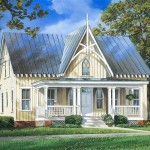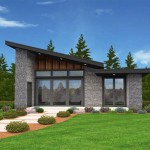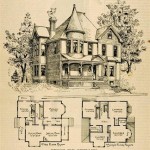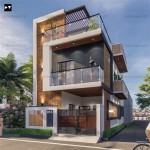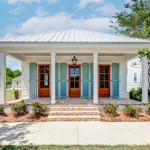Modern Prairie House Plans embody the architectural style that emerged in the early 20th century, blending organic forms and natural materials with functional design. Inspired by the vast prairies of the American Midwest, these plans prioritize open floor plans, expansive windows, and a close connection to the surrounding landscape. An iconic example is Frank Lloyd Wright’s Robie House, which exemplifies the Prairie School aesthetics.
Today, Modern Prairie House Plans continue to captivate homeowners seeking a harmonious balance between modernity and nature. With their emphasis on clean lines, geometric shapes, and sustainable materials, these plans offer a refreshing alternative to traditional suburban homes. By seamlessly integrating indoor and outdoor spaces, they create a living environment that is both aesthetically pleasing and practically functional.
In the following sections, we will delve deeper into the key characteristics, design principles, and benefits of Modern Prairie House Plans, providing inspiration and guidance for those considering adopting this captivating architectural style.
Modern Prairie House Plans embody key design principles that distinguish them from other architectural styles. Here are eight important points to consider:
- Horizontal Emphasis
- Open Floor Plans
- Expansive Windows
- Natural Materials
- Geometric Shapes
- Integrated Indoor/Outdoor Spaces
- Sustainability
- Craftsmanship
These elements combine to create a unique architectural style that is both aesthetically pleasing and highly functional.
Horizontal Emphasis
Horizontal emphasis is a defining characteristic of Modern Prairie House Plans. This design principle emphasizes the horizontal lines and low-slung profiles of the homes, creating a sense of balance and harmony with the surrounding landscape. The horizontal lines are often accentuated by long, overhanging eaves, which extend beyond the walls of the house and create a protective canopy over the windows and outdoor living spaces.
In addition to the eaves, horizontal emphasis can be achieved through the use of bands of windows, low-pitched roofs, and horizontal siding. These elements work together to create a visually appealing and cohesive design that complements the natural surroundings. The horizontal lines also help to visually expand the home, making it appear larger and more spacious than it actually is.
Another way that horizontal emphasis is achieved in Modern Prairie House Plans is through the use of open floor plans. These plans minimize the use of interior walls, creating large, open spaces that flow seamlessly from one room to the next. The open floor plans allow for a greater sense of spaciousness and provide more flexibility in how the home is used.
The horizontal emphasis in Modern Prairie House Plans not only enhances the aesthetic appeal of the homes but also provides practical benefits. The overhanging eaves protect the windows and outdoor living spaces from the elements, while the open floor plans allow for better air circulation and natural lighting. These features contribute to the overall comfort and energy efficiency of the homes.
Overall, the horizontal emphasis in Modern Prairie House Plans creates a visually appealing and functional design that is in harmony with the surrounding landscape. The use of horizontal lines, open floor plans, and other elements helps to create a sense of spaciousness, comfort, and energy efficiency.
Open Floor Plans
Open floor plans are a defining characteristic of Modern Prairie House Plans. These plans minimize the use of interior walls, creating large, open spaces that flow seamlessly from one room to the next. The open floor plans provide a number of benefits, including:
- Increased spaciousness
Open floor plans make homes feel larger and more spacious than they actually are. This is because the open spaces allow for better air circulation and natural lighting, which can make a home feel more inviting and comfortable.
- More flexibility
Open floor plans provide more flexibility in how a home is used. The lack of interior walls means that furniture can be arranged in a variety of ways, and the space can be easily adapted to meet changing needs. For example, a large open space can be used as a living room, dining room, and home office all in one.
- Improved communication and interaction
Open floor plans promote communication and interaction between family members and guests. This is because the open spaces allow people to see and hear each other more easily, even when they are in different parts of the house.
- More natural light
Open floor plans allow for more natural light to enter the home. This is because the lack of interior walls means that there are fewer obstructions to the flow of light. The natural light can help to reduce energy costs and create a more cheerful and inviting atmosphere.
Overall, open floor plans provide a number of benefits that make them a popular choice for Modern Prairie House Plans. The open spaces create a sense of spaciousness, flexibility, and improved communication and interaction. The open floor plans also allow for more natural light to enter the home, which can help to reduce energy costs and create a more cheerful and inviting atmosphere.
Expansive Windows
Expansive windows are another defining characteristic of Modern Prairie House Plans. These windows allow for a greater connection to the surrounding landscape and provide a number of benefits, including:
- Increased natural light
Expansive windows allow for more natural light to enter the home. This can help to reduce energy costs and create a more cheerful and inviting atmosphere. The natural light can also help to improve mood and productivity.
- Improved views
Expansive windows provide stunning views of the surrounding landscape. This can help to create a more relaxing and enjoyable living environment. The views can also help to increase the value of the home.
- Reduced energy costs
Expansive windows can help to reduce energy costs in two ways. First, the natural light that enters through the windows can help to reduce the need for artificial lighting. Second, the windows can be used to passively heat the home during the winter months. This is because the sun’s heat can enter through the windows and warm the interior of the home.
- Increased ventilation
Expansive windows can help to increase ventilation in the home. This is because the windows can be opened to allow fresh air to circulate. The increased ventilation can help to improve air quality and reduce the risk of respiratory problems.
Overall, expansive windows provide a number of benefits that make them a popular choice for Modern Prairie House Plans. The windows allow for a greater connection to the surrounding landscape, provide stunning views, reduce energy costs, and increase ventilation. These benefits can help to create a more comfortable, inviting, and energy-efficient home.
Natural Materials
Natural materials are another defining characteristic of Modern Prairie House Plans. These materials help to create a warm and inviting atmosphere, and they can also help to reduce the environmental impact of the home. Some of the most common natural materials used in Modern Prairie House Plans include:
- Wood
Wood is a versatile material that can be used for a variety of purposes in Modern Prairie House Plans. It can be used for structural framing, siding, flooring, and cabinetry. Wood is a strong and durable material that is also relatively easy to work with. It is also a natural insulator, which can help to reduce energy costs.
- Stone
Stone is another popular natural material used in Modern Prairie House Plans. It can be used for exterior cladding, interior flooring, and countertops. Stone is a durable and low-maintenance material that is also fire-resistant. It can also help to add a touch of rustic elegance to the home.
- Brick
Brick is a classic building material that has been used for centuries. It is a strong and durable material that is also fire-resistant. Brick can be used for exterior cladding, interior walls, and fireplaces. It is also a relatively low-maintenance material that can last for many years.
- Glass
Glass is a transparent material that is often used in Modern Prairie House Plans to create a greater connection to the surrounding landscape. It can be used for windows, doors, and skylights. Glass is a relatively fragile material, but it can be strengthened by using tempered glass or laminated glass.
These are just a few of the many natural materials that can be used in Modern Prairie House Plans. By using natural materials, homeowners can create a home that is both beautiful and sustainable.
In addition to the aesthetic and environmental benefits, natural materials can also provide a number of practical benefits. For example, wood is a natural insulator, which can help to reduce energy costs. Stone is a durable and low-maintenance material, which can save money on repairs and replacements. Brick is a fire-resistant material, which can help to protect the home from fires. Glass is a transparent material that can help to create a greater connection to the surrounding landscape.
Overall, natural materials offer a number of benefits that make them a popular choice for Modern Prairie House Plans. These materials can help to create a home that is beautiful, sustainable, and practical.
Geometric Shapes
Geometric shapes are another defining characteristic of Modern Prairie House Plans. These shapes are often used to create a sense of order and balance, and they can also be used to highlight certain features of the home. Some of the most common geometric shapes used in Modern Prairie House Plans include:
- Squares and rectangles
Squares and rectangles are the most common geometric shapes used in Modern Prairie House Plans. These shapes are often used to create a sense of order and balance. They can also be used to highlight certain features of the home, such as the entryway or the living room.
- Circles and ovals
Circles and ovals are also common geometric shapes used in Modern Prairie House Plans. These shapes can be used to create a sense of movement and fluidity. They can also be used to add a touch of whimsy to the home.
- Triangles
Triangles are another popular geometric shape used in Modern Prairie House Plans. These shapes can be used to create a sense of drama and excitement. They can also be used to add a touch of architectural interest to the home.
- Hexagons and octagons
Hexagons and octagons are less common geometric shapes used in Modern Prairie House Plans. However, these shapes can be used to create a unique and distinctive look. They can also be used to add a touch of complexity to the home.
Overall, geometric shapes play an important role in Modern Prairie House Plans. These shapes can be used to create a sense of order, balance, movement, and drama. They can also be used to add a touch of whimsy or architectural interest to the home.
Integrated Indoor/Outdoor Spaces
Modern Prairie House Plans often feature integrated indoor/outdoor spaces that seamlessly connect the interior of the home to the surrounding landscape. This integration creates a more spacious and inviting living environment, and it can also help to reduce energy costs. Some of the ways that indoor and outdoor spaces can be integrated in Modern Prairie House Plans include:
- Large windows and doors
Large windows and doors allow for a greater connection to the surrounding landscape, and they can also help to bring natural light into the home. In Modern Prairie House Plans, large windows and doors are often used to create a seamless transition between the interior and exterior spaces.
- Patios and decks
Patios and decks are outdoor living spaces that can be attached to the home or freestanding. They provide a great place to relax and enjoy the outdoors, and they can also be used for entertaining guests. In Modern Prairie House Plans, patios and decks are often designed to complement the architecture of the home, and they may be integrated into the overall design of the landscape.
- Courtyards
Courtyards are enclosed outdoor spaces that are surrounded by the home on all sides. They provide a private and sheltered place to relax and enjoy the outdoors. In Modern Prairie House Plans, courtyards are often used to create a sense of privacy and intimacy, and they may be landscaped with trees, shrubs, and flowers.
- Rooftop terraces
Rooftop terraces are outdoor living spaces that are located on the roof of the home. They provide a great place to relax and enjoy the views of the surrounding landscape. In Modern Prairie House Plans, rooftop terraces are often designed to complement the architecture of the home, and they may be landscaped with trees, shrubs, and flowers.
By integrating indoor and outdoor spaces, Modern Prairie House Plans create a more spacious and inviting living environment. The seamless transition between the interior and exterior spaces allows homeowners to enjoy the outdoors without having to leave the comfort of their home. Additionally, the integration of indoor and outdoor spaces can help to reduce energy costs by allowing for natural light and ventilation.
Sustainability
Sustainability is an important consideration in Modern Prairie House Plans. These homes are designed to be energy-efficient and environmentally friendly, reducing their impact on the environment. Some of the sustainable features that can be incorporated into Modern Prairie House Plans include:
- Energy-efficient appliances and lighting
Energy-efficient appliances and lighting can help to reduce the energy consumption of the home. Modern Prairie House Plans often incorporate Energy Star-rated appliances and LED lighting, which use less energy than traditional appliances and lighting.
- Solar panels
Solar panels can be installed on the roof of the home to generate electricity from the sun. This can help to reduce the home’s reliance on fossil fuels and lower energy costs.
- Geothermal heating and cooling
Geothermal heating and cooling systems use the earth’s natural heat to heat and cool the home. This can help to reduce the home’s energy consumption and lower energy costs.
- Water-saving fixtures
Water-saving fixtures, such as low-flow toilets and faucets, can help to reduce the home’s water consumption. This can help to conserve water and lower water bills.
By incorporating sustainable features into the design, Modern Prairie House Plans can help to reduce the environmental impact of the home and lower energy and water costs.
In addition to the sustainable features listed above, Modern Prairie House Plans can also be designed to be resilient to climate change. This can include using materials that are resistant to fire, flooding, and high winds. By designing homes that are sustainable and resilient, homeowners can help to protect their homes and families from the impacts of climate change.
Craftsmanship
Craftsmanship is an essential element of Modern Prairie House Plans. These homes are built to last, with careful attention to detail and quality construction. Some of the key aspects of craftsmanship that are evident in Modern Prairie House Plans include:
- High-quality materials
Modern Prairie House Plans use high-quality materials throughout the home, both inside and out. This includes using durable materials for the exterior, such as brick, stone, and wood, and using high-quality finishes and fixtures for the interior, such as hardwood floors, granite countertops, and custom cabinetry.
- Expert craftsmanship
The homes are built by skilled craftsmen who take pride in their work. This is evident in the attention to detail and the quality of the construction. The homes are built to last, and they are designed to withstand the test of time.
- Timeless design
Modern Prairie House Plans are designed to be timeless, with a classic style that will never go out of fashion. The homes are designed to blend in with the surrounding landscape, and they often feature natural materials and colors.
- Energy efficiency
Modern Prairie House Plans are designed to be energy-efficient, with features such as high-performance windows, efficient appliances, and solar panels. This helps to reduce energy costs and create a more comfortable living environment.
By combining high-quality materials, expert craftsmanship, timeless design, and energy efficiency, Modern Prairie House Plans create homes that are beautiful, durable, and sustainable.










Related Posts

